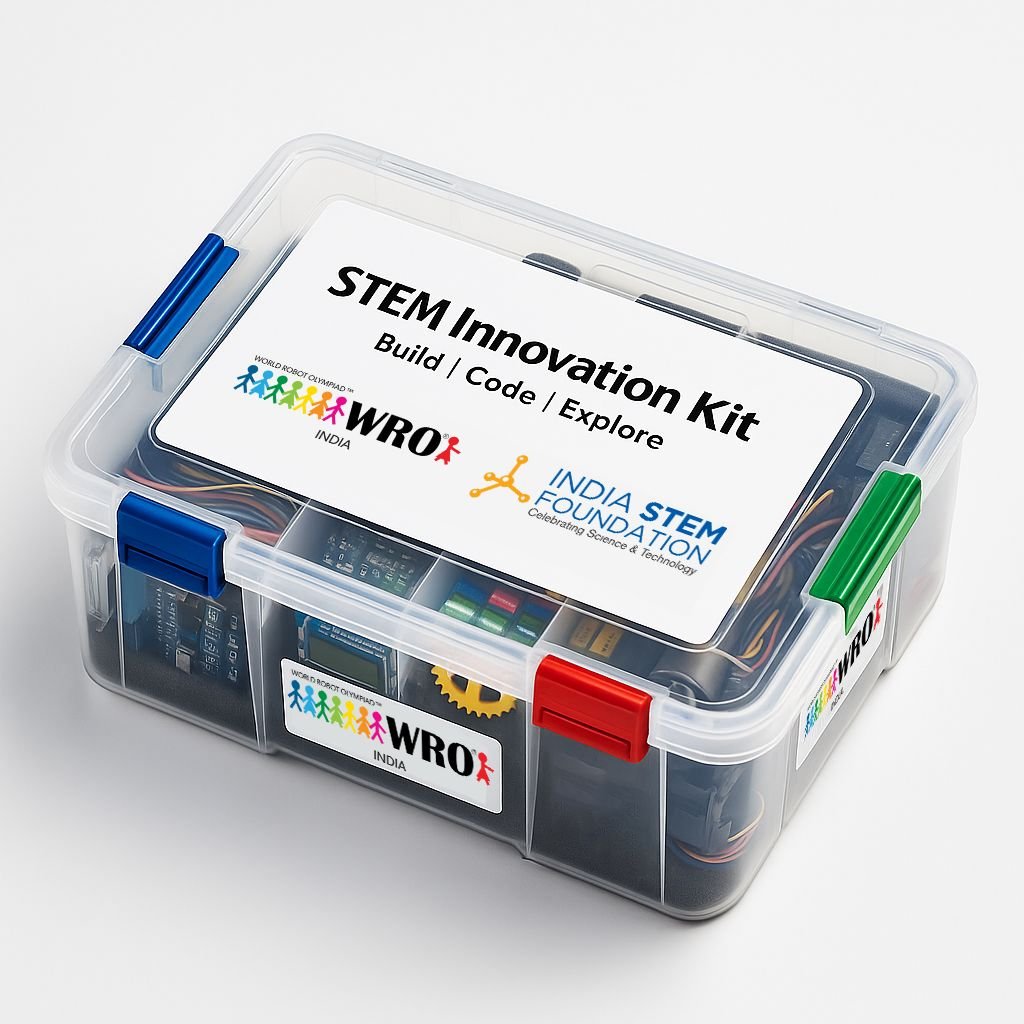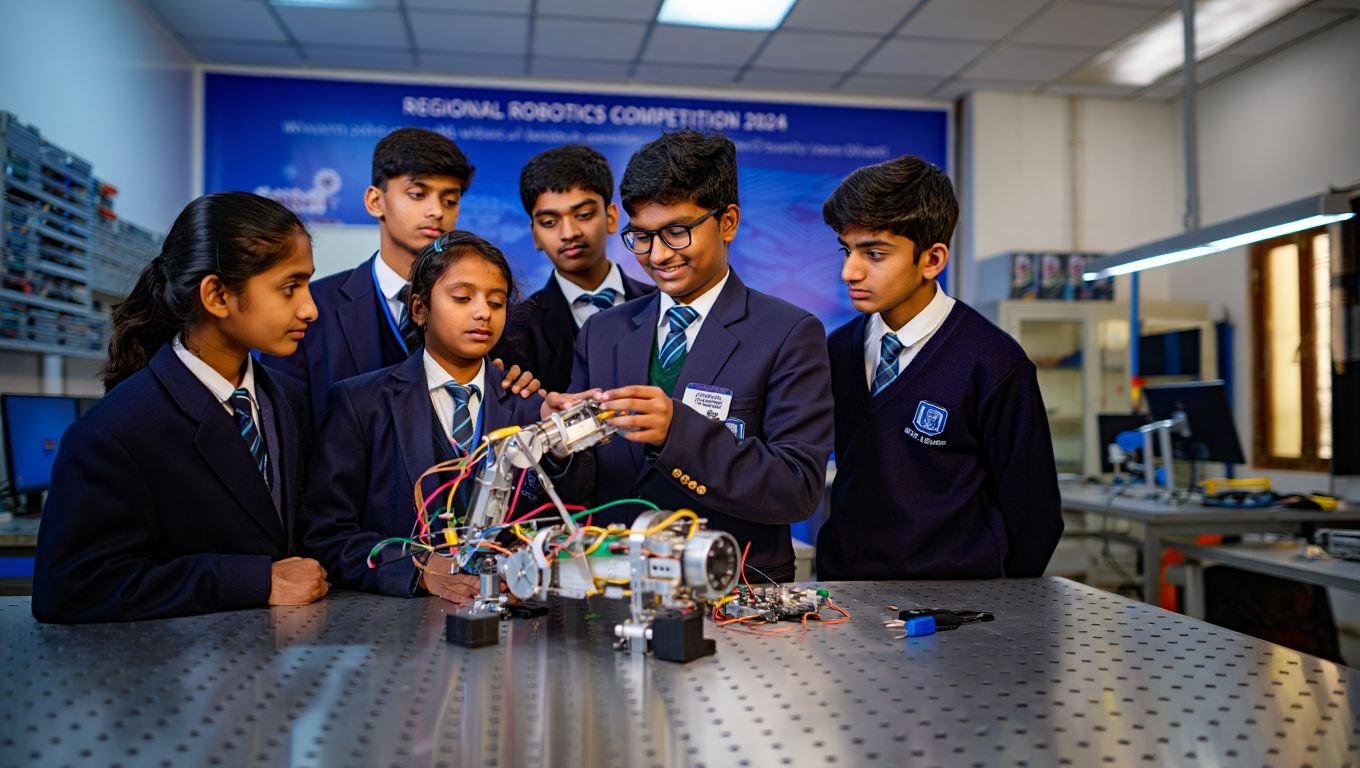With robots defining the future more and more, STEM becomes the way ahead. In order to address social difficulties, STEM—science, technology, engineering, and math—offers an interdisciplinary approach that encourages innovation and discoveries. Students who receive a STEM education are able to overcome obstacles like gender inequality and accessibility issues by developing sophisticated abilities like critical thinking and problem-solving.
In the rapidly evolving, technologically dependent society of today, inventions frequently result from addressing current issues. Industries are looking for people who can solve problems well, are driven, and have a natural curiosity so they can keep up with the quickly changing technology scene. Striking a balance between autonomy and human engagement is becoming more and more important, from building smart home technologies to improving accessibility and personalized healthcare systems. With artificial intelligence using algorithms to adjust to personal tastes, it emphasizes how important it is to comprehend robotics programs in a world where technical advancements are happening at a rapid pace.
Artificial Intelligence Changing Nature of Work and Employment
Work and employment are being revolutionized by artificial intelligence, and many industries are seeing radical shifts as a result of their capacity to automate procedures. Automation is replacing human labor in a growing number of industries, including transportation, manufacturing, and services. This change not only modifies the nature of work itself but also necessitates skill enhancement and opens up new career paths for specialized workers. AI is already revolutionizing the workplace as we know it, changing customer service in real time. AI-powered chatbots have been included by several businesses in their customer support systems. By utilizing their innate cognitive abilities, these chatbots are able to comprehend customer inquiries and deliver timely replies quickly.
Importance of Robotic Education in Modern Age
Robotics education is the study and use of robotics ideas, procedures, and resources in educational settings. Teaching students about the design, construction, programming, and operation of robots is another aspect of incorporating robotics into STEM (science, technology, engineering, and mathematics) curricula. The purpose of robotics education is to foster students’ creativity, critical thinking, and problem-solving skills while equipping them with the knowledge and skills necessary to understand and apply robotics concepts. Through chances for practical learning, robotics education enables students to explore the transdisciplinary nature of robotics and its relevance to real-world issues. Through robotics learning, people may become adept in subjects like coding, electronics, mechanical engineering, and collaboration, preparing them for careers in fields where robotics is crucial.
Programs in robotics education are organized classes or extra-curriculars that aim to teach students about the fundamentals, innovations, and uses of robotics. Typically, these programs involve students designing, constructing, programming, and operating robots as part of an experiential learning process. Education robotics programs can vary from basic courses in elementary school to sophisticated workshops or competitions in secondary and tertiary education establishments. These programs’ main goals are to increase students’ interest in STEM (science, technology, engineering, and mathematics) subjects, improve their technical proficiency, and build their capacity for critical analysis, problem-solving, and collaboration in a technologically advanced environment.
Robotic education is the focus of the India STEM Foundation’s CSR initiative, Robo Siksha Kendra. This program aims to provide students with the knowledge and skills they need to thrive in an increasingly automated society.
Skills Acquired by Robotic Education in STEM
Problem-solving skills: Participating in robotics activities calls on you to identify challenges, devise fixes, and resolve issues that arise throughout the construction and use of robots. Students develop their ability to analyze problems, break them down into smaller components, and come up with novel solutions.
Critical thinking: Students taking part in robotics programs are urged to evaluate different approaches to problem-solving in a critical manner. They acquire the capacity to assess the feasibility of their ideas, make informed decisions, and adjust their plans in response to feedback and observations. This fosters the kind of critical thinking and inquiry that are essential for handling difficult real-world circumstances.
Logical reasoning: When constructing and programming robots, students must adhere to logical processes. They learn how to schedule ahead of time, organize work, and debug code or design errors. Through this process, students develop the logical thinking skills necessary to understand cause-and-effect relationships and reach logical conclusions.
Spatial awareness: Robotics design and manufacture need the use of physical components in three-dimensional space. Students learn about spatial awareness when they view and engage with objects in their environment. This is a helpful skill in engineering, design, and architecture, in addition to robots. Robotics programs need accuracy and meticulousness, especially when coding or creating mechanical components. Students learn the skill of thoroughness in their work, ensuring that every component is positioned properly and that every code line is produced accurately. Better success on a range of professional and academic projects is the outcome of this attention to detail.
Resilience and tenacity: When working on robotics projects, which frequently require trial and error, students frequently encounter challenges. Persistent students understand how to overcome obstacles, improve their plans, and persevere until they achieve. This encourages children to view setbacks as opportunities for progress, which fosters resilience and a growth mentality.
A person’s robotic education leads to the development of numerous more abilities. Competitions that teach the application of skills in real life are another contributing aspect. For this reason, school-based competitions and national and international competitions like the World Robot Olympiad are held.
The World Robot Olympiad encourages collaboration, innovation, and problem-solving while giving young innovators a platform. The next generation of technology leaders is produced by WRO India’s inventive culture. Engaging in these activities develops critical thinking, creativity, and practical skills, which in turn impacts future STEM education and produces a skilled labor force. These not only give participants visibility, networking opportunities, and personal development, but they also affirm their accomplishments and skills in STEM.
In conclusion, STEM is the way forward, as robotic education shape our future. It encourages creativity and uses math, science, technology, and engineering to address societal issues. Students who possess STEM skills are able to overcome challenges such as gender inequality and accessibility by developing their critical thinking and problem-solving capabilities. Industries are looking for people who can adjust to technology changes and strike a balance between autonomy and human interaction in smart home technologies and personalized healthcare in today’s tech-driven culture.




